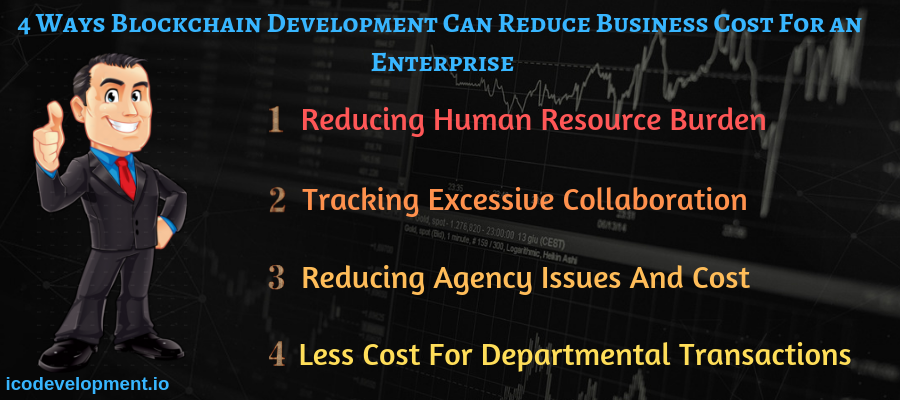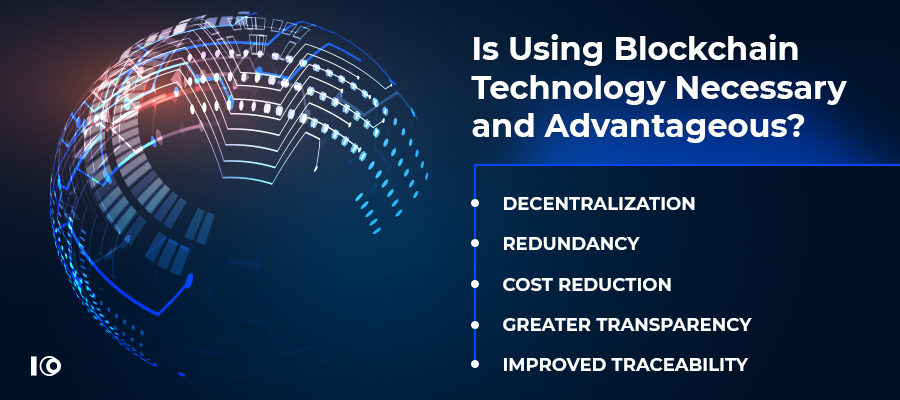Will Blockchain Development Replace ERP and DBMS System?
February 28, 2019A Brief Overview of DApp Development
March 4, 2019Blockchain development is considered to be a remedy to all industries problem, but a public ledger such as BitCoin and Ethereum are unacceptable by major industry player. Why? Because anyone with a public key can access the network and if a glitch found, the block data can be stolen or can be erased as we have seen in DAO’s case. But still organization wants to experiment and have blockchain solutions for enterprise implementation for the following reasons:
01. Reducing Human Resource Burden
One of the burdens of the human resource department of any large enterprise is payroll management of employees. Payroll management includes salaries and wages payment, employee benefits, provident fund facilities, and tax-related costs. Companies which work in manufacturing or pharma industry has employees in large, and their cost sometimes holds more than 70% of the total business cost. But the significant number of employees and other responsibilities on human resource departments makes then unable to stipulate more time on payroll management. Moreover, over-time payments to employees are also a cost for the enterprise. Tracking and analyzing the excess of over-time charge is also essential for a large conglomerate. Excess of over-time do increases employee income and work satisfaction, but it doesn’t promise more productivity and more results for the company.
Blockchain enables tracking of the frequency and department from where over-time cost incurred.
That is why managing payroll and tracking over-time cost should be a priority of human resource of the company. One of the easy ways to do so is through blockchain development. Blockchain provides transparency on every information recorded in blocks. By gaining more visibility of payrolls and overtime costs of employees can be reduced. Blockchain enables tracking of the frequency and department from where over-time cost incurred. Further, management can take proper actions to reduce the over-time cost and increase the productivity of employees within office hours.
02. Tracking Excessive Collaboration
Excessive collaboration is too much of task responsibilities on an employee or a team. An employee or a team sometimes have diversified knowledge which according to company managers might be beneficial for the company, hence responsibilities and unintentional expectation increases and leads to employee burnout. Employee burnout is a stressful employee who is emotionally and physically unmotivated to do any work. Moreover, company managers overestimate employees workload based on digital productivity tools and hardly ever cross-verifies with actual results.
An enterprise blockchain can help restructure the organization system and to identify the point at which excessive collaboration is taking place. A blockchain enables transparent organization structure. In a private blockchain, nodes are identifiable, and these nodes can be project or company managers. By tracking excessive collaboration, it can be reduced, and employee burnout can be avoided as well.
03. Reducing Agency Issues And Cost
An agency issue is a conflict between company’s shareholders or investors and company management during decision making. Company’s shareholders aim for a profit on their investment while company management such as the board of directors aims for growth of the company. The decision to share profit with shareholders or to use the same to grow a company is one type of conflicting decision. If a company decides to use funds to improve the company, the compensation to shareholders needs to be paid which is known as agency cost. It is an unavoidable operation cost for the company moreover if an agent is hired to represent the shareholders who manipulate the decisions by shareholders results in less trust in company decision making. So a need of transparent decision making is required.
In case of less number of shareholders or investors, even third-party agent is not needed. Investors can act as a node to vote.
Here, blockchain development comes into the picture. A blockchain based voting system can save company decisions from manipulation, and fair voting can take place. In case of less number of shareholders or investors, even third-party agent is not needed. Investors can act as a node to vote.
04. Less Cost For Departmental Transactions
A conglomerate works in more than one product or service. For example, a fabric manufacturing company will also have its supply chain or wholesale store chain across countries which works independently as a subsidiary to the central business. The transactions between subsidiary companies main companies also require legal documentation, accounting adjustments, and other cash management costs. Legal and accounting expenses cannot be avoided, but other costs such as cash management and third-party involvement can be removed through the implementation of blockchain based smart contracts.
Apart from reducing the business cost of an enterprise, blockchain enables fast execution of transactions, real-time tracking of each block of information, transparency in every decision at every level of the company and privacy of the data at the same time with Hyperledger fabric.
We hope you have found this article informative and interesting. For more information or queries visit at icodevelopment.io and know more about this technology. You can also contact us or send us an email at sales@icodevelopment.io




